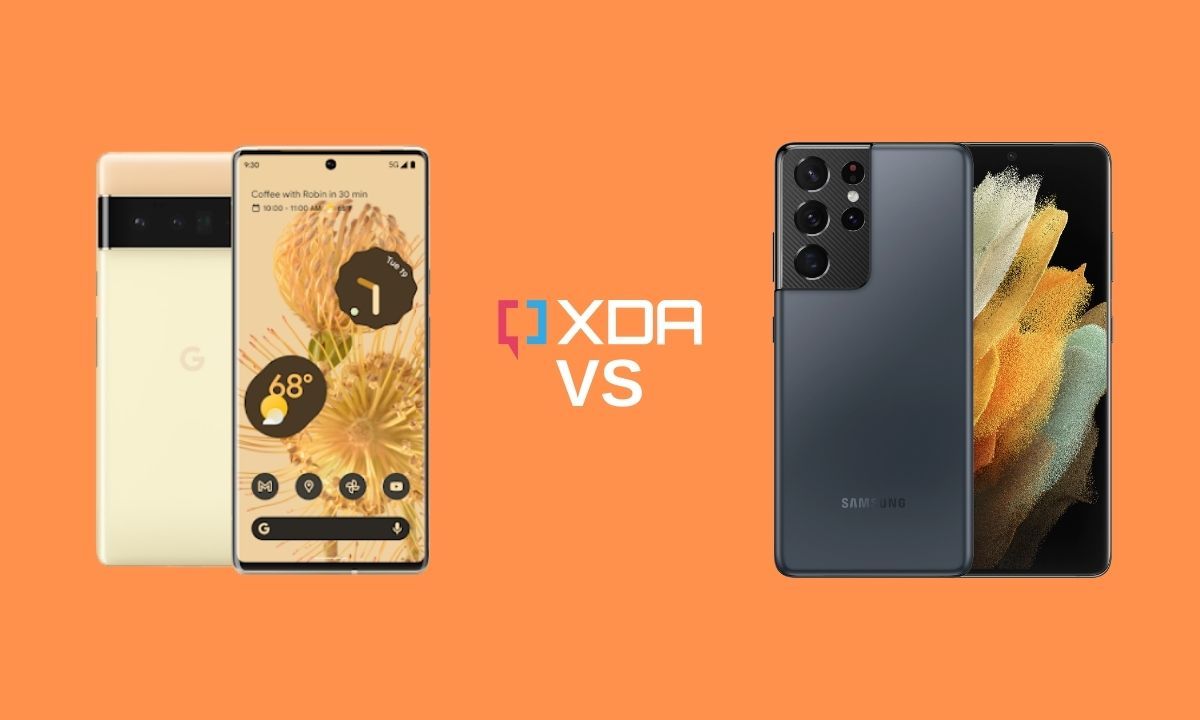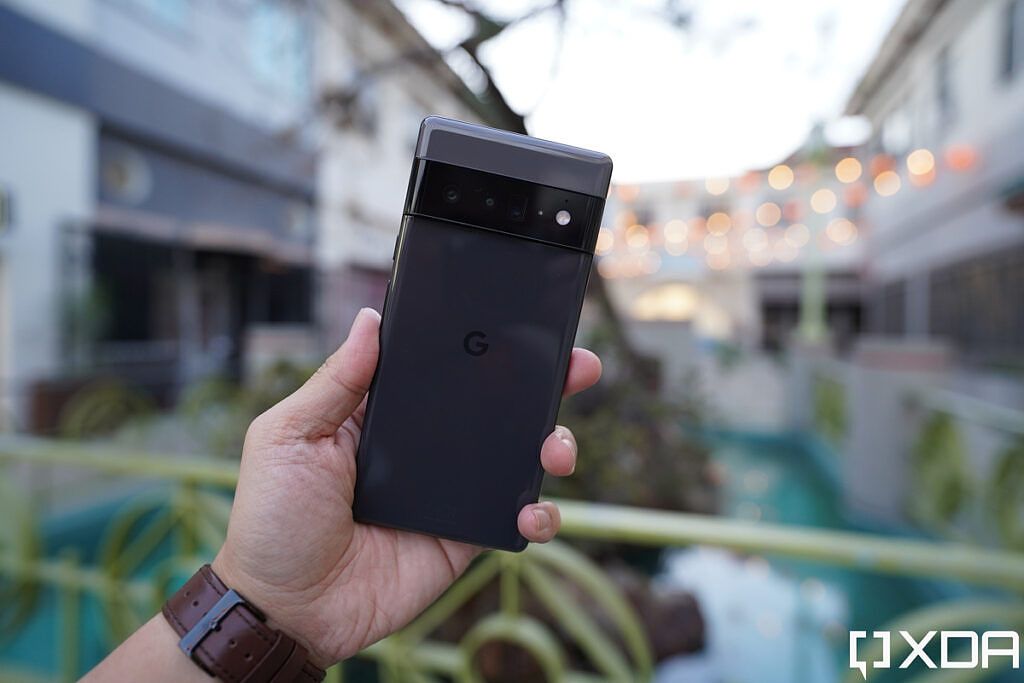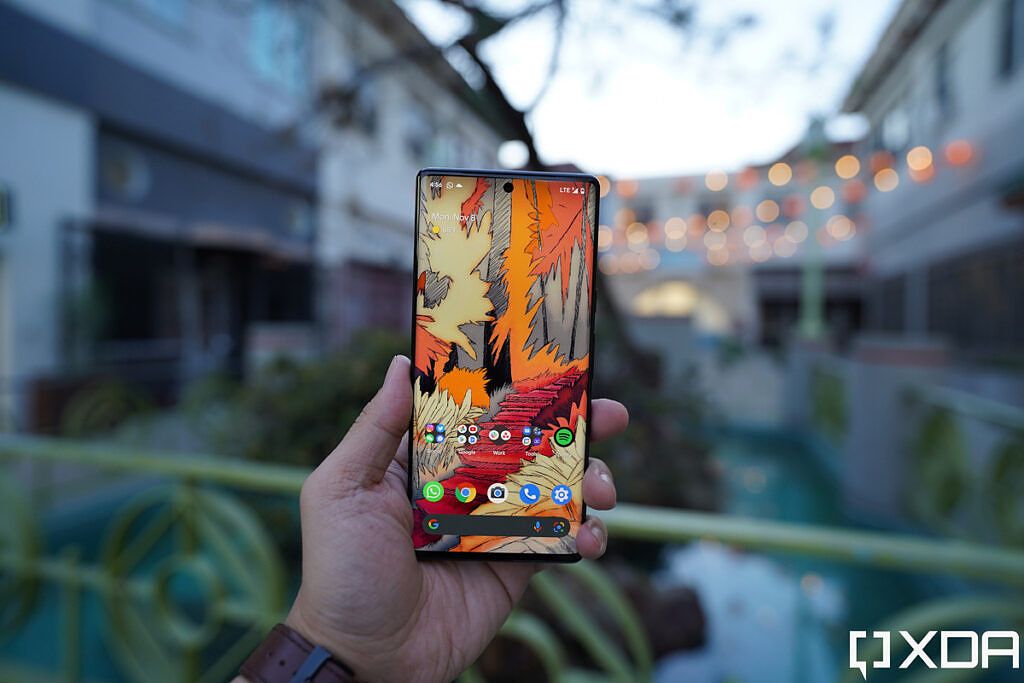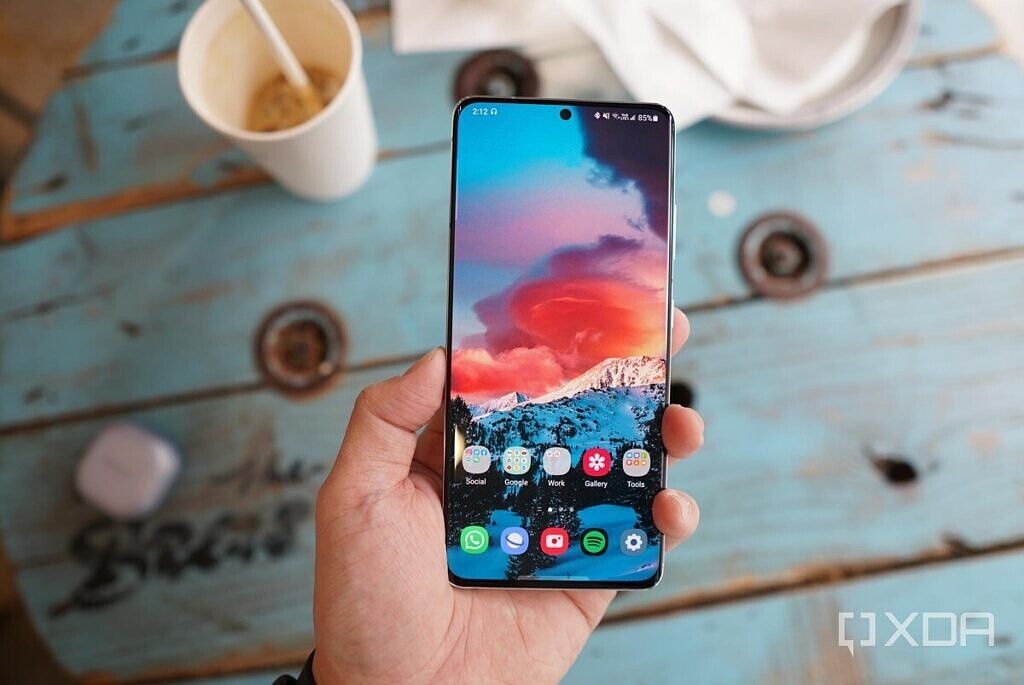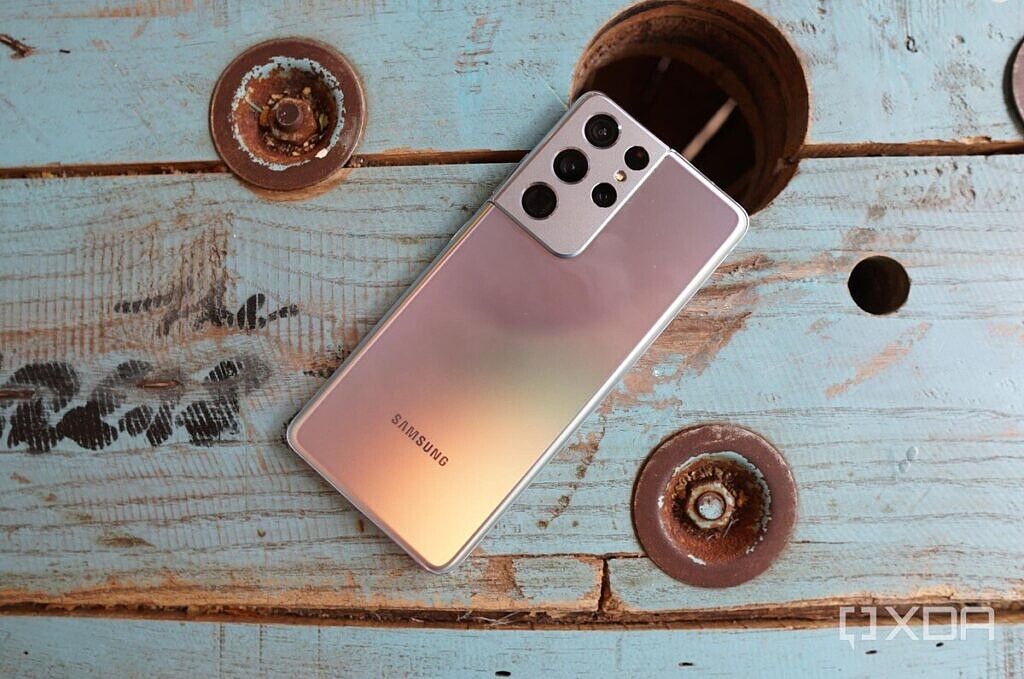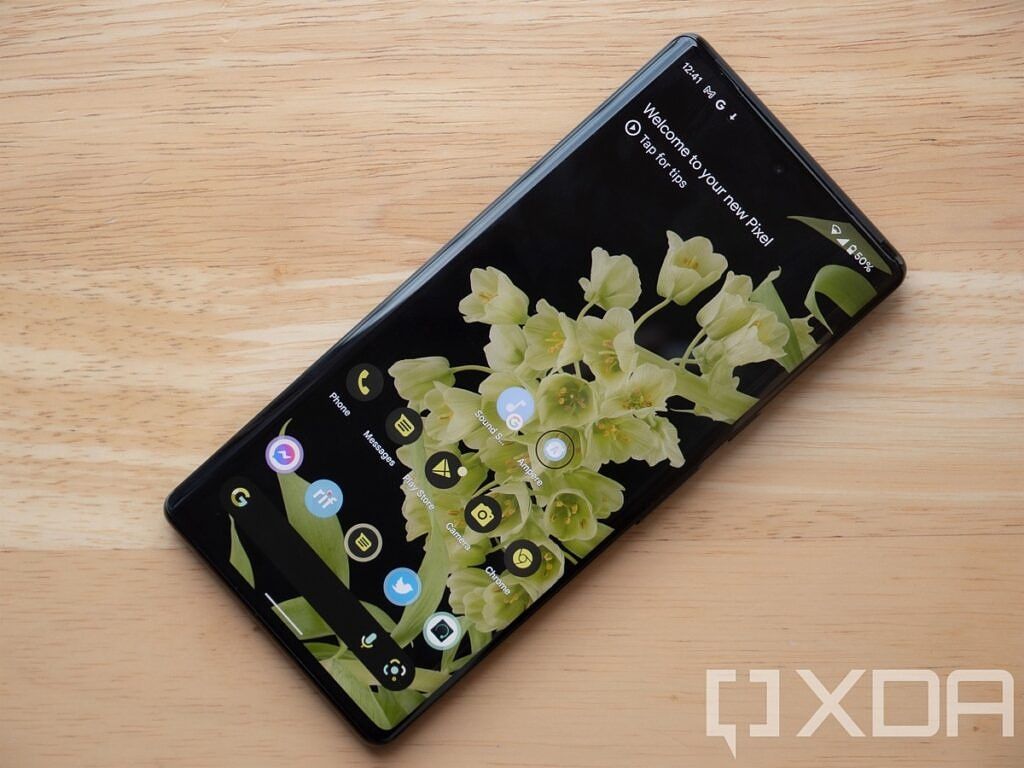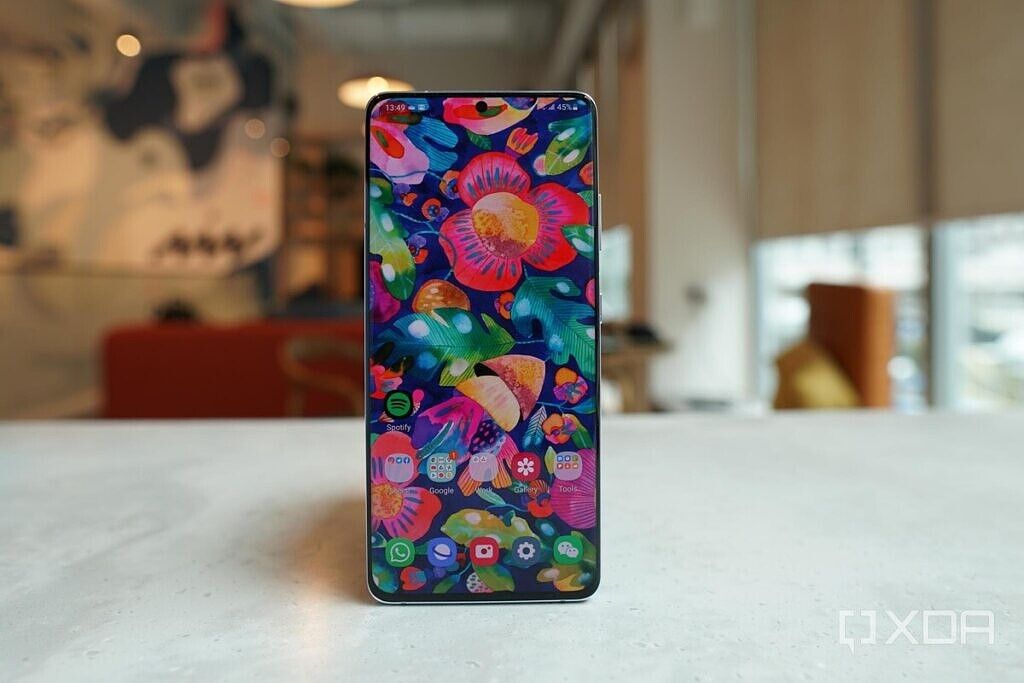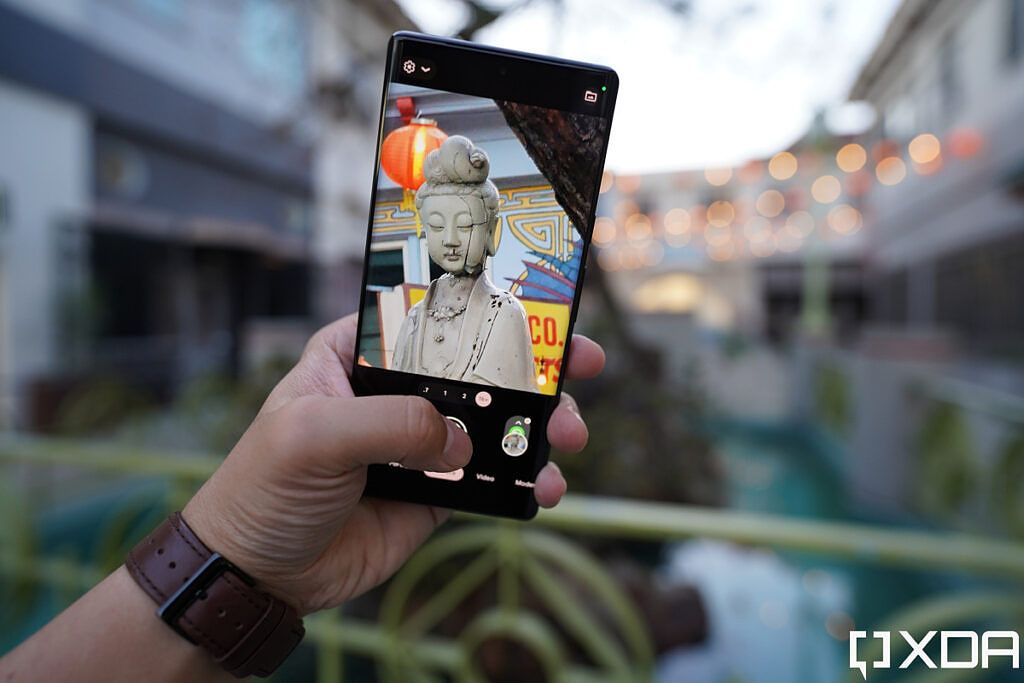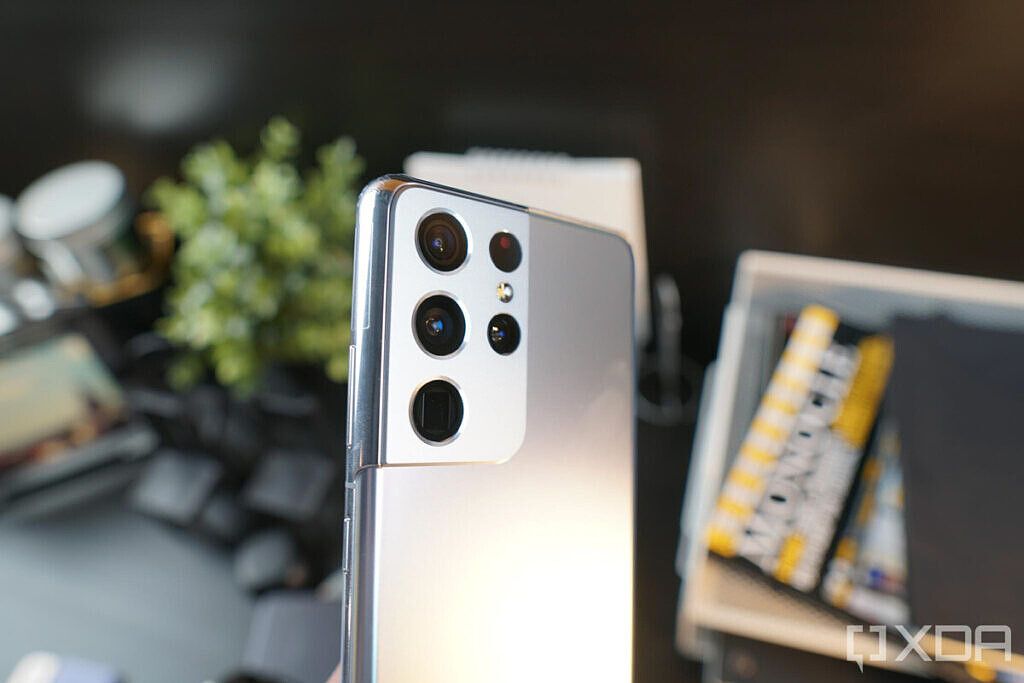The Pixel 6 Pro brings Google back into the flagship discussion after the launch of the mid-range Pixel 5. The company says it spent years on research and development, leading up to the launch of the Pixel 6 and the Pixel 6 Pro. As we mentioned in our Google Pixel 6 Pro review, it's a fantastic everyday phone that offers reliable day-to-day performance and has great cameras. There's a lot to like about the Pixel 6 Pro, but how does it compare with other smartphones in its class? In this article, we're going to take a look at the Google Pixel 6 Pro vs Samsung Galaxy S21 Ultra comparison to find out which one's better.
The Galaxy S21 Ultra may not be the latest flagship from Samsung as we have the Galaxy S22 Ultra wearing that crown now. But it's still an "Ultra" phone at the end of the day that is meant to be the absolute pinnacle of the company’s mobile technology. So even if it's a year old, you're still going to get a great experience overall without having to spend big bucks. Let's dive into the comparison to find out which one's better out of the two, shall we?
Navigate this comparison:
Google Pixel 6 Pro vs Samsung Galaxy S21 Ultra: Specifications
Before we jump into the comparison, let's take a quick look at their specifications to see what each of these phones brings to the table:
|
Specification |
Google Pixel 6 Pro |
Samsung Galaxy S21 Ultra |
|---|---|---|
|
Build |
|
|
|
Dimensions & Weight |
|
|
|
Display |
|
|
|
SoC |
|
|
|
RAM & Storage |
|
|
|
Battery & Charging |
|
|
|
Security |
|
|
|
Rear Camera(s) |
|
|
|
Front Camera(s) |
|
|
|
Port(s) |
USB 3.1 Type-C |
USB 3.2 Type-C |
|
Audio |
Stereo speakers |
|
|
Connectivity |
|
|
|
Software |
|
Samsung One UI 3.1 based on Android 11 |
|
Other Features |
|
|
Both the Google Pixel 6 Pro and the Samsung Galaxy S21 Ultra, as you can see, are on par with each other in terms of the specs. Sure, there are some noteworthy differences between the two, but it appears as though both phones offer a well-rounded experience. Let's dive a little deeper into individual sections to see what you get.
Design & build quality: Two unique-looking phones
Let's kick things off with the design. Google's Pixel phones have managed to differentiate themselves over the years with quirky texture finishes and fun colorways. While the company has followed the conventions of other Android OEMs to offer a typical glass and metal sandwich slab this time, we think the Pixel 6 Pro still has a pretty unique design. It comes in three colorways -- Cloudy White, Sorta Sunny, and Stormy Black, all of which have a black-colored camera visor at the back which houses the phone's camera sensors. It's a sizable bump, but we prefer it as it goes across the entire device as opposed to the ones that protrude on just one side. The Pixel 6 Pro doesn't rock on the desk while using it.
The Pixel 6 Pro, unlike the regular Pixel 6, features a curved display on the front with a center-aligned punch-hole camera on the top and a visible chin. The power button is on the right side of the phone, above the volume rocker. You get a SIM card tray on the left side and the USB 3.1 Type-C port at the bottom, beside the speaker grille. The Pixel 6 Pro, has what we'd call a "boxy" design that looks reminiscent of older Galaxy Note phones. Design is entirely subjective, but we really like how the Pixel 6 Pro looks.
The Samsung Galaxy S21 Ultra, on the other hand, is also a very unique-looking phone. Design-wise, we think it represents a big improvement over the Galaxy S20 Ultra. The new "contour cut" camera module adds more personality to the phone and we also like how it blends seamlessly into the aluminum frame. It's still a huge camera bump, so your phone is bound to wobble while it's lying flat on a table. The Samsung Galaxy S21 Ultra is available to purchase in a bunch of different colorways -- Phantom Gray, Phantom White, and the Samsung web store exclusive Phantom Titanium, Phantom Navy, and the Phantom Brown.
Overall, though, the Galaxy S21 Ultra looks and feels like other Samsung flagships. There's a massive 6.8-inch curved display on the front that might take a while to get used to if you're coming from a smaller phone with a flat display. The Galaxy S21 Ultra has a centered hole-punch camera on top of the display and it also has a visible chin. The volume rockers and the power button are on the left side, but it's worth pointing out that the power button is below the volume rocker, unlike the Google Pixel 6 Pro. You get a USB 3.2 Type-C port at the bottom along with a SIM card try on one side and the speaker grille on the other. The curvature of the screen on the sides is more subtle in the case of the Galaxy S21 Ultra. Although that's still something you'll have to get used to if you're coming from a device with a flat screen, so no differences here.
If you take a look at the dimensions of both the Pixel 6 Pro and the Galaxy S21 Ultra, then you'll realize that both devices almost have the same footprint. They both measure 8.9mm in thickness which means they're relatively thin phones compared to many phones out there. But if you are leaning towards buying a lighter phone, then the Google Pixel 6 Pro is worth considering as it weighs a few grams less coming in at 210 grams versus 229 grams of the Galaxy S21 Ultra.
As for the durability, both Google Pixel 6 Pro and the Galaxy S21 Ultra are on equal footing with IP68 water and dust resistance and comparable screen protection with Gorilla Glass Victus. The Gorilla Glass Victus, in case you are wondering, offers protection against the typical bumps and minor drops, but they both are glass slabs, which means they'll still break if either of them takes a significant hit. We recommend turning to a case to protect these expensive glass devices, even if it comes at a cost of negating some of the design aspects of each phone. You can check out our collection of the best Google Pixel 6 Pro case and the best Samsung Galaxy S21 Ultra case to find some of the best cases on the market for these phones.
The Galaxy S21 Ultra features an ultrasonic in-display fingerprint scanner which is known to be fast and very reliable. The Google Pixel 6 Pro also comes with an optical under-display fingerprint scanner. It's also a fast and responsive scanner, though it's known to be less reliable, especially if you're using a screen protector on it. Speaking of screen protectors, we suggest you take a look at our collection of the best Google Pixel 6 Pro screen protectors and best Galaxy S21 Ultra screen protectors to find some great options.
All things considered, it's safe to say that both the Google Pixel 6 Pro and the Galaxy S21 Ultra are two of the best-looking phones we've seen in years. They both represent a significant change in design compared to their previous-gen counterparts. Both phones are distinct in their own way and we think they also make it easy to hold and use, despite their relatively big form factors. Lastly, it's worth mentioning that the Galaxy S21 Ultra also supports the S Pen stylus. It's not a part of the package, though, and there is no cavity to store it within the device itself. This means you'll have to purchase it separately and store it externally.
Display: QHD+ display with LTPO on both phones
The Google Pixel 6 Pro uses Samsung's display tech against the Galaxy S21 Ultra with its 6.7-inch, QHD+ (3120x1440 pixel) LTPO OLED display. Google has introduced an adaptive refresh rate with the Pixel 6 Pro, however, it's worth pointing out that this phone is using first-gen LTPO which means it can only go between 10Hz to 120Hz. The Galaxy S21 Ultra matches it with a 6.8-inch WQHD+ (3200x1440 pixel) LTPO Dynamic AMOLED 2X display, which can also go between 10Hz to 120Hz. The newer phones, including the Galaxy S22 Ultra, feature an LTPO 2.0 display that can vary refresh rate between 1Hz to 120Hz. Although neither of the phones in this particular comparison support that, so keep that in mind.
The Galaxy S21 Ultra has a 20:9 aspect ratio panel with ~515 PPI whereas the Google Pixel 6 Pro features a 19.5:9 aspect ratio panel with ~512 PPI. Looking at those numbers, it's safe to say that they're both virtually indistinguishable when it comes to sharpness. If anything, it's a point in favor of the Galaxy S21 Ultra since it has a slightly larger display. Both phones have a center-aligned punch-hole camera on the top of the display, which is again something we've gotten used to over the years. Notably, both displays also have HDR10+ support and an "Always-on display" too. You can read our full review of each of these phones to get more info about the display.
Internal hardware: Google Tensor vs Exynos & Snapdragon
As far as the internal hardware is concerned, all models of the Pixel 6 Pro are powered by the Google Tensor octa-core chipset. The Google Tensor is the company's first custom mobile chipset, and it’s made specifically for the Google Pixel 6 Pro. In the case of the Galaxy S21 Ultra, however, the chipset varies by location -- it has a Snapdragon 888 in the United States and a few other regions and Samsung’s own Exynos 2100 chipset in other parts of the world. The base variant of both phones packs 12GB of LPDDR5 RAM and 128GB of UFS 3.1 storage. On the top-end, you get 12GB RAM and 512GB storage with the Pixel 6 Pro, whereas you get up to 16GB RAM and 512GB storage with the Galaxy S21 Ultra.
Finally, both the Galaxy S21 Ultra and the Google Pixel 6 Pro come with a 5,000 mAh battery. We expect both phones to easily last for an entire day without any issues, but your mileage may vary based on the usage. The Galaxy S21 Ultra supports 25W fast charging with USB PD 3.0 whereas the Google Pixel 6 Pro supports up to 30W fast charging with USB PD 3.0. You also get support for wireless charging with both phones, although the Pixel 6 Pro is faster here too with up to 23W fast wireless charging as opposed to 15W wireless charging on the Galaxy S21 Ultra. You also get reverse wireless charging with both devices but it goes without saying that it's not going to be as fast as the standard wireless charging speeds. Another thing that's worth pointing out about the Galaxy S21 Ultra is that it doesn't come with a charger in the box for most regions. Google is yet to follow this trend, so you do get a charger in the box with the Pixel 6 Pro.
Camera: Galaxy S21 Ultra has a more advanced camera system
Google's Pixel smartphones, as you probably already know, are recognized for their cameras. The Google Pixel 6 Pro is a massive departure from the older Pixel units in terms of the camera hardware. The camera visor at the back houses the phone’s 50MP Samsung GN1 primary camera, the 12MP ultra-wide camera, and the 48MP telephoto camera. The Samsung GN1 camera sensor is the same one that powers the Vivo X70 Pro Plus, so we already know how capable this sensor is. If you don't know what we're talking about, then be sure to check out our Google Pixel 6 Pro and Vivo X70 Pro Plus camera comparison to find out what this primary sensor can do.
The Samsung Galaxy S21 Ultra features a quad-camera setup that includes a 108 MP wide-angle lens, a 12 MP ultra-wide-angle lens, and two 10MP telephoto lenses, each projecting into a 1/3.24″ sensor with large 1.22µm pixels. The primary 108MP sensor is an f/1.8 shooter with a large 1/1.33″ sensor producing images with 0.8µm large pixels. The phone then combines nine of these pixels into one pixel (nona-binning), giving you an output of 12MP with 2.4µm large pixels. And in the case of the telephoto lens, the Galaxy S21 Ultra uses two of them to provide optical zoom at two different levels. The first is a 10MP f/2.4 shooter that provides 3x optical zoom, while the second is a 10MP f/4.9 shooter that provides 10x optical zoom. Both of these lenses also come with OIS capabilities.
As far as the front cameras are concerned, you get an 11.1MP f/2.2 selfie shooter with the Pixel 6 Pro and a 40MP, f/2.2 shooter with the Galaxy S21 Ultra. On the video front, the Pixel 6 Pro can record 4K@30/60fps and 1080p@30/60/120/240fps with its rear camera. The selfie camera, on the other hand, can only do 4K@30/60fps or 1080p@30fps. The Galaxy S21 Ultra is superior when it comes to video recording capability. In addition to 4K@30/60fps and 1080p@30/60/240fps, the Galaxy S21 Ultra can also do 8K@24fps and 720p@960fps. Notably, it also supports HDR10+ video recording. The 40MP selfie camera on the Galaxy S21 Ultra can do 4K@30fps and 1080p@30/60fps.
We're adding some camera samples captured from both the Google Pixel 6 Pro and the Galaxy S21 Ultra below. We highly suggest you check out our detailed reviews of each phone to find lot more camera samples and even video recording samples to get a better understanding of what each of these phones can do.
Google Pixel 6 Pro camera samples:
Samsung Galaxy S21 Ultra camera samples:
Google Pixel 6 Pro vs Samsung Galaxy S21 Ultra: Which one should you buy?
The Galaxy S21 Ultra may not be the latest Samsung flagship on the market, but we think it still holds up pretty well in 2022. Both devices offer premium design and build quality for the price. We think they both look very unique, so we'll leave it up to you to decide which one you like the best. The display on each phone is also very similar, both in terms of the physical size and specifications such as refresh rate, brightness, and more. And just like other flagship devices, you're not going to be disappointed with the performance of either of these devices when it comes to day-to-day usage. Sure, you're bound to see some differences when it comes to the benchmarks, but that shouldn't be an issue because they both offer a great user experience overall.
Both the Galaxy S21 Ultra and the Google Pixel 6 Pro also have capable camera hardware, but we think the Galaxy S21 Ultra's advanced camera system is more versatile thanks to those telephoto lenses, with support for up to 10x optical zoom and 100x digital zoom. The Google Pixel 6 Pro falls a bit short in this regard as it can only do 4x optical and 20x digital zoom. That being said, we suggest you check out our reviews of these phones to see some camera samples before making a purchase decision.
As far as the software is concerned, both devices are now running on Android 12, even though the Galaxy S21 Ultra was launched with Android 11 out of the box. You get the clean Pixel experience with the Pixel 6 Pro while the Galaxy S21 Ultra is running on One UI 4 based on Android 12. Google has promised up to three years of OS updates and up to five years of security updates, whereas the Galaxy S21 Ultra is promised to get four Android OS upgrades in total, which is pretty good. This, once again, comes down to your personal preference, as each version of the OS powering these phones has something unique to offer.
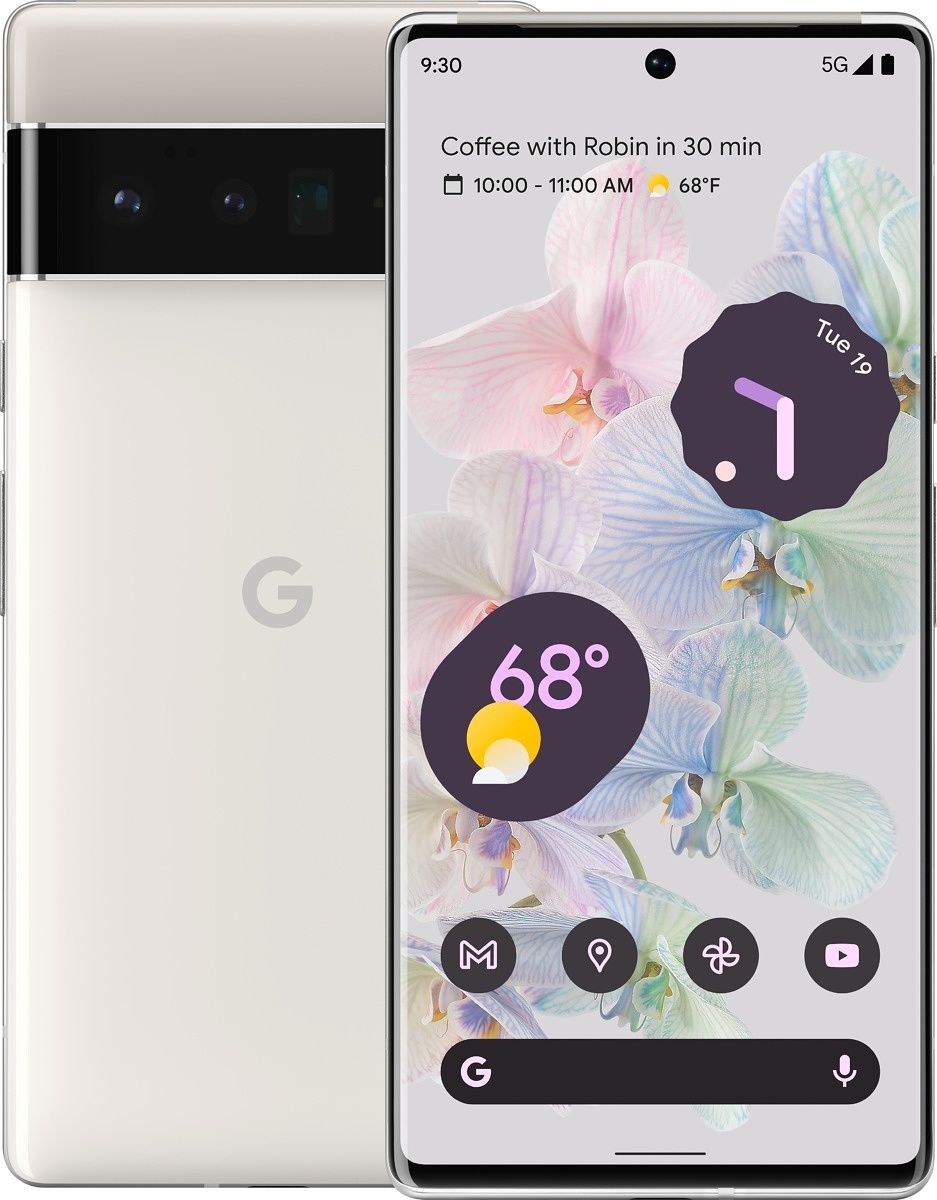
Google Pixel 6 Pro
The Google Pixel 6 Pro is the latest and greatest flagship smartphone from Google, and it has a lot to love. It's not perfect, but it's the best Google phone yet for sure.
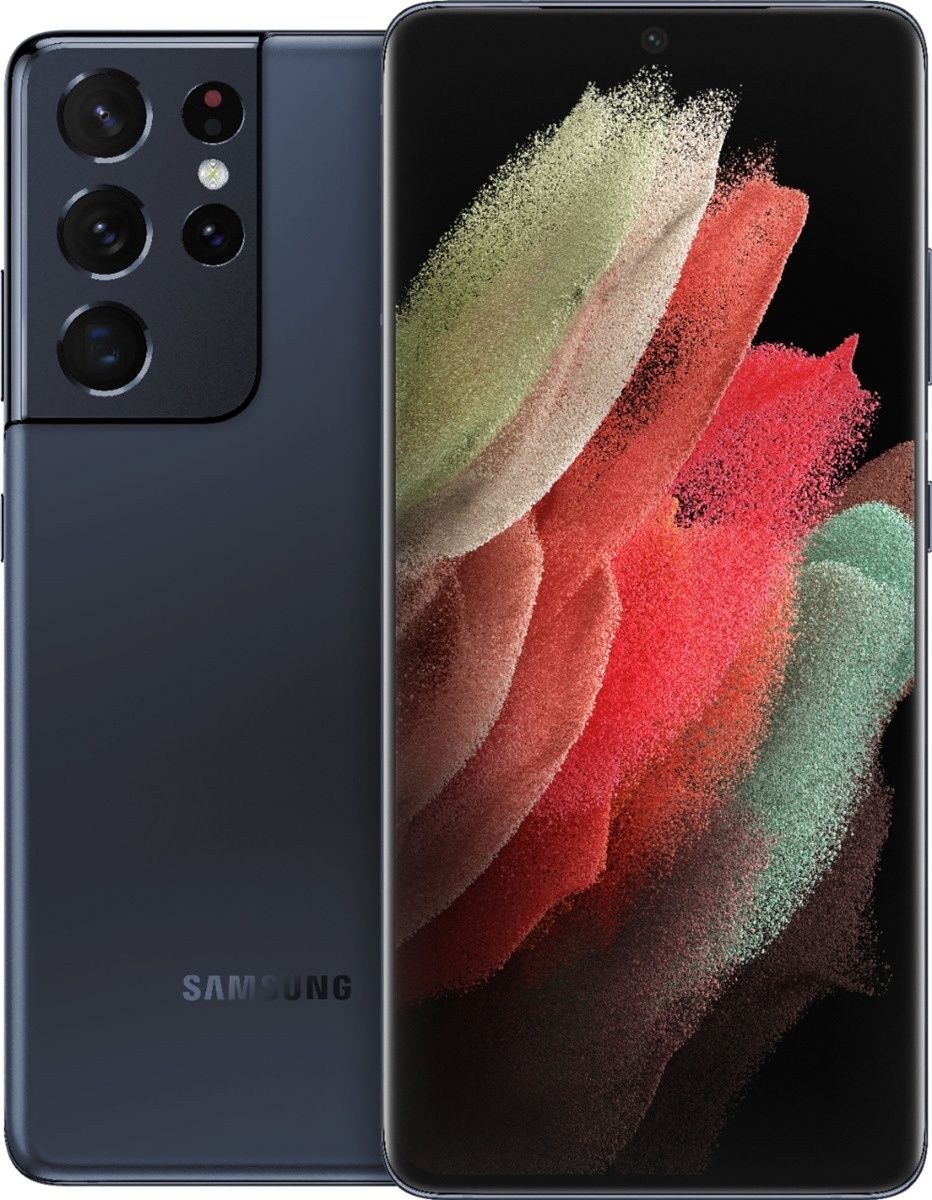
Samsung Galaxy S21 Ultra
The Samsung Galaxy S21 Ultra is the ultimate overkill in the new 2021 flagship series, packing in a flagship SoC, a premium build, a great display, and an amazing camera setup, as well as all the extras expected on a premium flagship.
The Google Pixel 6 Pro starts at $899 and is readily available to purchase right now from the Google Store. The Galaxy S21 Ultra isn't readily available from Samsung as the company is only selling the Galaxy S21 FE for now. However, you can buy the Galaxy S21 Ultra from third-party retailers including Best Buy for a starting price of $1,199. It's worth pointing out that the Galaxy S21 Ultra is now frequently discounted and you should expect to pay somewhere around $1,000. You can take a look at our best Galaxy S21 Ultra deals and best Google Pixel 6 Pro deals to see if you can save some money on your purchase. Even factoring in the Galaxy S21 Ultra's discounted price, the Pixel 6 Pro is cheaper and offers more value for most people. The Galaxy S21 Ultra definitely offers some hardware advantages over the Pixel 6 Pro, but it's up to you to decide whether or not those features are worth the premium price.

